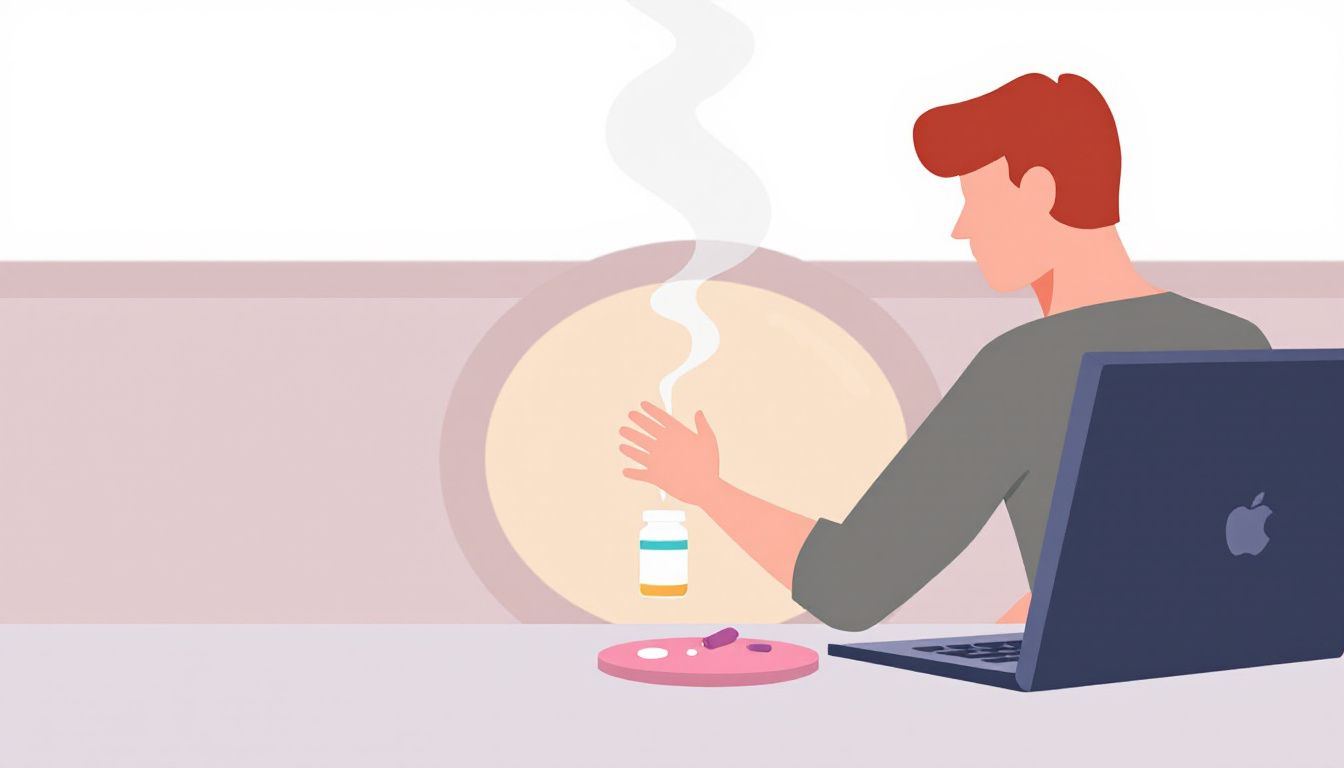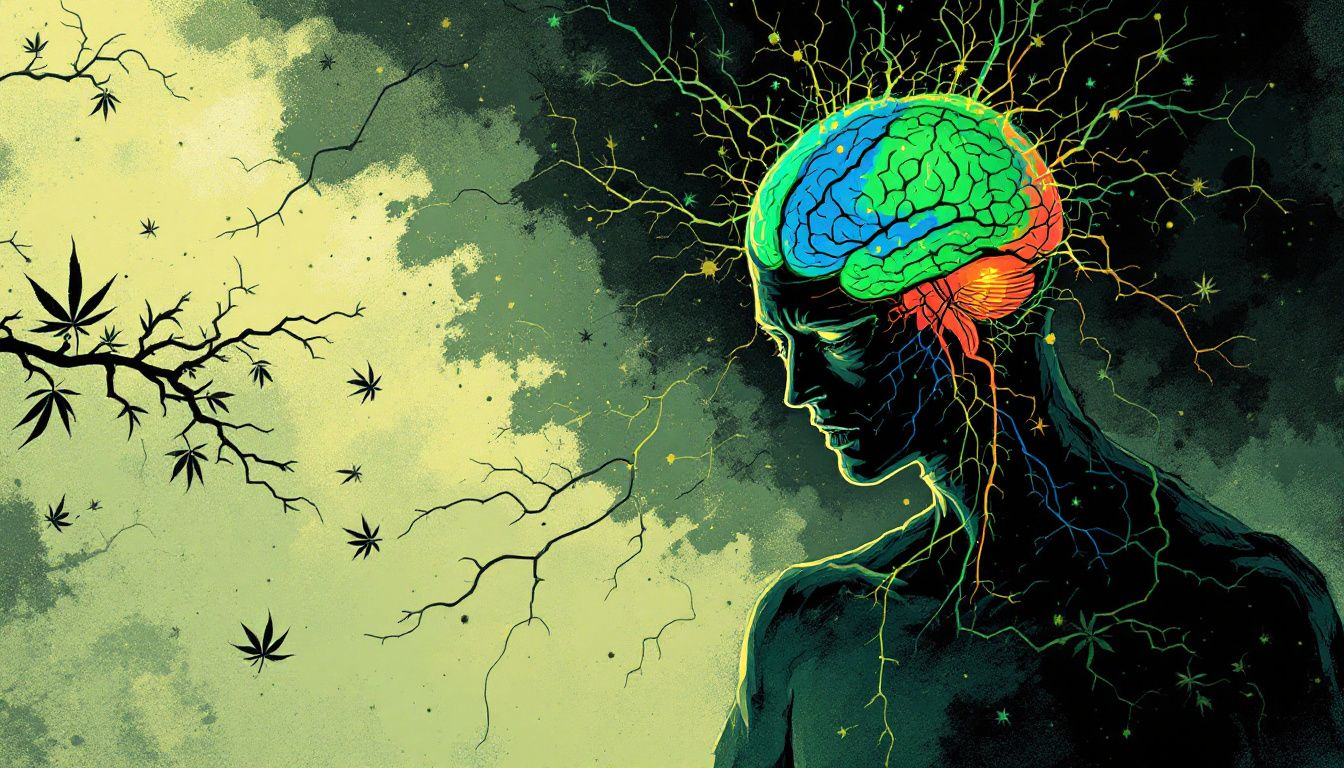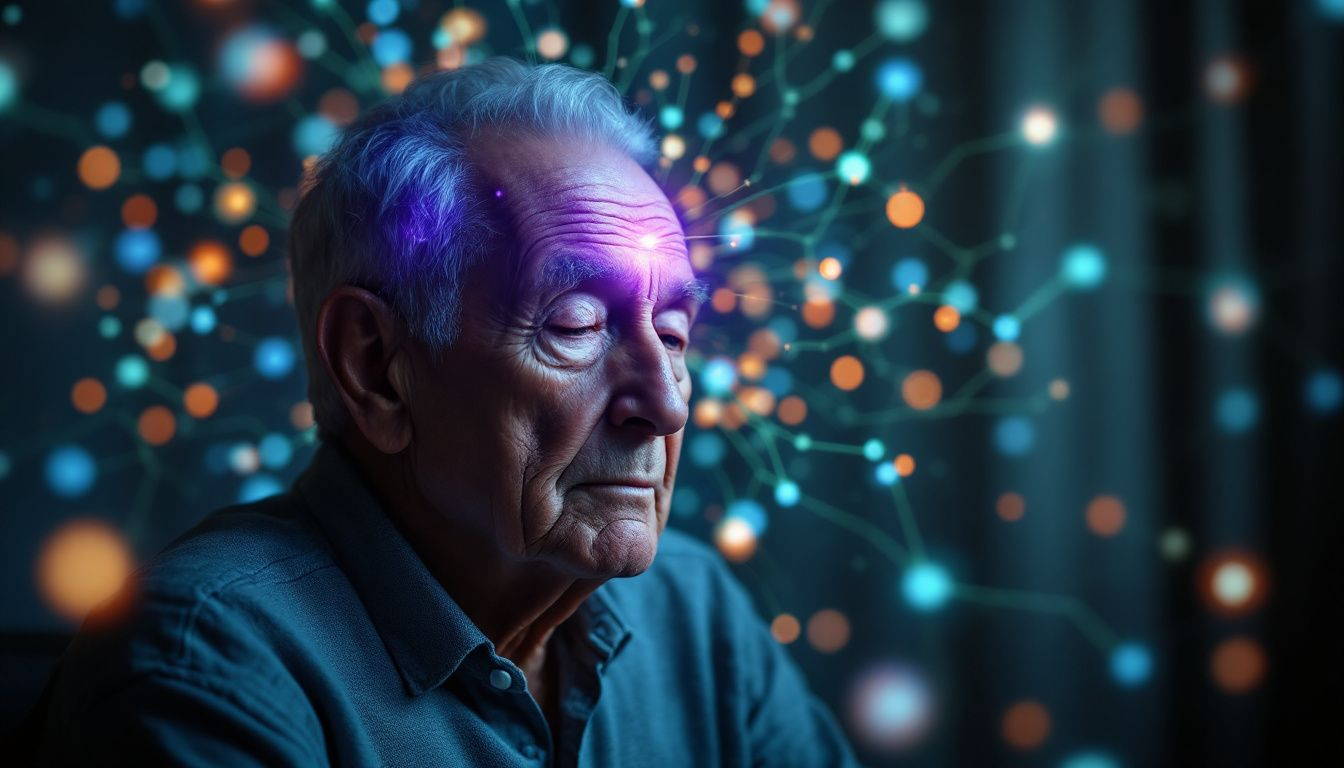Are You Aware of How Weed Affects Your Brain? Delving into Cognitive Function
Cannabis, commonly known as weed, affects the brain in several ways. Understanding what does weed do to your brain involves looking at both short-term and long-term effects on cognition and brain function. This article explores these impacts, discussing how different cannabinoids interact with brain receptors and what the consequences might be for frequent users, adolescents, and those with specific health conditions. By the end, you’ll have a clearer picture of how cannabis could influence your cognitive abilities and overall brain health.
Understanding Cannabis and the Brain
The cannabis plant has been used for centuries for its medicinal and psychoactive properties. The main psychoactive component of marijuana, tetrahydrocannabinol (THC), is responsible for the euphoric effects that many users seek. However, cannabis contains over 100 different cannabinoids, each interacting with the body in unique ways. One of the most well-known non-psychoactive cannabinoids is cannabidiol (CBD), which has been studied for its potential therapeutic benefits.
At the core of cannabis’s effects on the human brain is the endocannabinoid system, a complex network of receptors and neurotransmitters that regulate various physiological processes. The CB1 receptors, primarily found in the brain, play a significant role in modulating mood, cognition, and overall brain function. THC activates these CB1 receptors, leading to the psychoactive effects commonly associated with cannabis use. In contrast, CBD interacts with the endocannabinoid system differently, which may contribute to its broader therapeutic applications.
The effects of cannabis on the brain can vary significantly based on several factors, including:
- The frequency and magnitude of use
- The potency of the cannabis product
- The mode of consumption
- The age of the consumer
For instance, while occasional use may lead to temporary cognitive impairments, heavy and frequent cannabis users may experience more pronounced and lasting effects. Additionally, synthetic cannabinoids, which are often more potent than natural cannabis, can have different and sometimes more severe impacts on brain function.
Understanding how much marijuana one consumes and how regularly it is used is crucial in determining its overall impact on brain development and cognitive function. This understanding becomes particularly important when considering vulnerable populations, such as adolescent cannabis users, whose developing brains are more susceptible to the effects of cannabis.
In summary, the interaction between cannabis and the brain is complex and multifaceted. While THC and CBD are the primary cannabinoids of interest, the full spectrum of effects involves a delicate interplay between various factors. As we delve deeper into specific effects, both short-term and long-term, it becomes evident why a nuanced understanding is necessary for both users and healthcare providers.
Short-Term Effects on Cognitive Function
Acute cannabis use can have a significant impact on cognitive functions, particularly those related to memory, executive function, and processing speed. Tasks that require decision-making, such as the Iowa Gambling Task and delayed discounting tasks, have shown considerable impairments following acute cannabis use. This cognitive impairment can manifest as poorer performance in educational attainment and other areas requiring complex cognitive functioning.
One of the most striking short-term effects of cannabis use is on working memory. While verbal fluency might remain intact, the ability to hold and manipulate information is often significantly impaired. This can lead to difficulties in everyday tasks that require planning and executing multiple steps, ultimately affecting overall cognitive performance.
The effects of cannabis use on executive function are also noteworthy. Executive function encompasses a range of cognitive processes, including problem-solving, flexible thinking, and self-control. Acute cannabis use has been shown to impair these functions, leading to negative outcomes in tasks that require careful thought and planning. This impairment can be particularly problematic for individuals in high-stakes environments, such as students or professionals in demanding fields.
Interestingly, the health effects of cannabis use can vary between recreational users and those using cannabis for therapeutic purposes. Studies indicate that recreational cannabis users experience greater adverse effects on memory and executive functions compared to medical cannabis patients. This difference may be attributed to the varying reasons for cannabis consumption and the different dosages and strains used.
While some may argue that the negative effects of cannabis use are transient and reversible, it is essential to recognize the potential for immediate cognitive impairment. Low blood pressure and other physiological changes can also accompany acute cannabis use, further complicating its impact on cognitive functions.
Understanding these short-term effects is vital for making informed decisions about cannabis use.
Long-Term Effects on Brain Structure
Chronic cannabis use has been associated with significant alterations in brain structure, particularly in areas critical for memory and learning. One of the most affected regions is the hippocampus, which is known for its high density of CB1 receptors. Studies have shown that long-term cannabis users may experience a reduction in hippocampal volume and gray matter density, which can have lasting implications for cognitive function.
The developing brain is especially vulnerable to the effects of chronic cannabis use. Neuroimaging studies have indicated that adolescent cannabis users may experience alterations in both gray and white matter structures. These changes can affect brain development processes such as myelination and synaptic pruning, potentially leading to long-term cognitive impairments.
In older adults, heavy cannabis use has also been linked to changes in brain structure. The hippocampus, already susceptible to age-related decline, may undergo further alterations due to prolonged cannabis use. This can exacerbate age-related cognitive decline, highlighting the need for caution among older cannabis users.
Longitudinal studies have provided insights into the persistent cognitive impairments associated with cannabis use during adolescence. These studies suggest that the negative effects on cognitive functions such as memory and attention may continue even after periods of abstinence. This underscores the importance of considering the long-term impacts of cannabis use, particularly for young and developing brains.
Despite the growing body of evidence, more research is needed to fully understand the long-term effects of cannabis on brain structure and function. Organizations like the National Institute on Drug Abuse emphasize the need for further research to clarify these neural mechanisms and their implications for public health. As we continue to explore these long-term effects, it is crucial to balance the potential benefits of cannabis use with its risks.
Adolescent Brain Development and Cannabis

Adolescence is a critical period for brain development, marked by significant changes in structure and function. During this time, the brain undergoes processes such as myelination and synaptic pruning, which are essential for healthy cognitive development. However, early cannabis exposure can disrupt these processes, leading to negative cognitive consequences.
Research indicates that cannabinoid receptors, which are critical for brain development, increase throughout adolescence. The alteration of these receptors by cannabis can result in significant neurocognitive challenges. For instance, heavy cannabis use during adolescence is linked to deficits in memory and attention, which can persist into adulthood.
One of the most concerning aspects of adolescent cannabis use is its potential to cause long-lasting neurostructural changes. Studies have shown that regular cannabis use during adolescence can lead to persistent changes in brain structure, particularly in the hippocampus. These changes may not fully reverse even after extended periods of abstinence, highlighting the importance of preventing early cannabis use.
The impact of cannabis on the developing brain is further compounded by the fact that adolescents are more likely to engage in risky behaviors and substance abuse. The combination of cannabis use with other drugs and alcohol can exacerbate its negative effects, leading to more severe cognitive impairments and mental health issues. This underscores the need for targeted interventions to reduce cannabis use among young adults.
In conclusion, cannabis profoundly affects the adolescent brain, which is especially vulnerable to its disruptive effects. Addressing the unique challenges faced by adolescent users can promote healthier brain development and cognitive function.
Cannabis Use Disorder and Mental Health

Cannabis use disorder (CUD) is a condition characterized by the problematic use of cannabis, leading to significant impairment or distress. Individuals with CUD may develop a tolerance to cannabis, requiring larger amounts to achieve the same effects. This can lead to increased consumption and a higher risk of developing mental health disorders.
There is evidence of a bidirectional relationship between cannabis use and symptoms of anxiety and depression. Frequent cannabis users are at a higher risk of developing anxiety and depressive disorders, and those with pre-existing mental health conditions may experience worsened symptoms. This relationship is particularly concerning for individuals with a history of mental health issues, as cannabis use can contribute to the emergence or recurrence of mental health problems.
Cannabis withdrawal symptoms can also have a significant impact on mental health. Emotional symptoms during withdrawal may include anger, depressive moods, and heightened anxiety, while physical symptoms can consist of stomach upset and drug cravings. These withdrawal symptoms can start within two days of cessation and last from 2 to 10 days, making it challenging for individuals to quit cannabis use.
Higher potency cannabis, often referred to as Skunk, contains elevated levels of THC that may increase mental health risks. These stronger strains can exacerbate symptoms of anxiety, depression, and even psychosis, highlighting the need for caution when consuming high-potency cannabis products.
Studies have indicated that users with cannabis dependence show more significant structural brain changes compared to regular users without dependence. These changes can lead to cognitive impairment and adverse psychological effects, raising concerns about the therapeutic application of cannabis. As we continue to explore the effects of cannabis use disorder, it is essential to balance the potential benefits of cannabis with its risks to mental health.
Therapeutic Uses of Cannabis

Despite the potential risks, cannabis has shown promise as a therapeutic tool for certain medical conditions. Many patients using medical marijuana report relief from symptoms of chronic pain and PTSD, although scientific backing is still limited. For instance, some patients with cancer or multiple sclerosis have experienced significant pain relief with cannabis use.
Preclinical studies have demonstrated the potential of cannabinoids to produce therapeutic effects for PTSD, yet human trials are limited and often of low quality. Cannabinoids might offer anti-inflammatory properties, which could be beneficial for individuals with PTSD who show signs of elevated inflammation. However, the U.S. Department of Veterans Affairs found insufficient evidence to support the effectiveness of cannabis for chronic pain and PTSD treatment.
The potential therapeutic benefits of cannabis extend beyond pain relief. Cannabis is being explored for its potential to treat a variety of conditions, including epilepsy, anxiety, and sleep disorders. However, current research highlights the need for larger, well-designed studies to clarify the efficacy and safety of cannabis in treating these conditions.
Medical cannabis patients often use cannabis products with higher CBD content, which may offer therapeutic benefits without the psychoactive effects of THC. This distinction is crucial, as it allows patients to manage their symptoms without experiencing the euphoric effects that recreational users seek. Understanding the difference between medical and recreational cannabis use is essential for both patients and healthcare providers.
In conclusion, while the therapeutic uses of cannabis are promising, more robust scientific evidence from clinical trials is needed to fully understand its potential benefits and risks. Exploring medical applications of cannabis requires caution and a thorough understanding of its effects.
Comparing Recreational and Medical Cannabis Use
The cognitive effects of cannabis use can vary significantly based on the user’s purpose. Recreational users often consume cannabis for its psychoactive effects, while medical cannabis patients use it to manage specific symptoms. This difference in purpose can lead to different cognitive outcomes, with recreational users often experiencing greater cognitive impairment.
Variables such as the age of cannabis onset and the frequency of use play crucial roles in determining cognitive outcomes. Studies indicate that recreational users who start using cannabis at a younger age and use it more frequently tend to experience poorer cognitive performance compared to medical users. This is particularly evident in tasks requiring attention and decision-making, where recreational users often show greater impairments.
The type of cannabis consumed and the dosage also contribute to variability in cognitive effects. Recreational users may prefer cannabis strains with higher THC content, which can lead to more pronounced cognitive impairments. In contrast, medical cannabis patients often use strains with higher CBD content, which may mitigate some of the negative cognitive effects.
Research suggests that the acute and chronic effects of cannabis use differ between recreational and medical users. Recreational users may experience immediate impairments in cognitive function, while medical users might have different long-term outcomes based on their usage patterns and the specific conditions they are treating. Understanding these differences is crucial for tailoring cannabis use to individual needs and minimizing potential risks.
In conclusion, the cognitive effects of cannabis can vary widely based on the context of its use. By comparing recreational and medical cannabis use, we can better understand the factors that influence cognitive outcomes and develop strategies to optimize the benefits while minimizing the risks.
Cannabis and Mental Health Disorders
Research has established a correlation between cannabis consumption and the onset of various mental health disorders. For instance, stronger strains of cannabis, such as Skunk, which contain higher levels of THC, can exacerbate mental health conditions, including psychosis and PTSD. This relationship highlights the importance of understanding the specific impacts of different cannabis products on mental health.
Cannabis use can contribute to the emergence or relapse of mental disorders symptoms. Decision-making abilities, for example, can be significantly impaired by cannabis use, resulting in slower response times and decreased accuracy in tasks requiring planning and inhibition. This impairment can have serious implications for individuals with pre-existing mental health disorders, as it can worsen their symptoms and hinder their ability to manage their conditions effectively, particularly in relation to mental health services administration.
Working memory is another cognitive function consistently impaired following acute cannabis intoxication. This impairment affects the ability to hold and manipulate information, which is crucial for everyday functioning and mental health. Additionally, the presence of THC in cannabis is linked to mood alterations, which can further impact mental health.
Regular users of cannabis for recreational purposes tend to demonstrate poorer cognitive performance compared to those using it for medical reasons. This difference may be due to the varying dosages and strains used, as well as the underlying reasons for cannabis consumption. Understanding these distinctions is crucial for developing effective interventions and support systems for individuals with mental health disorders.
In conclusion, while cannabis has potential therapeutic benefits, its use is also associated with significant mental health risks. By understanding the complex relationship between cannabis use and mental health disorders, we can better support individuals in making informed decisions about their cannabis consumption.
Potential Benefits and Risks of Cannabis-Assisted Therapy
Cannabis-Assisted Psychedelic Therapy™ (CAPT) is an emerging therapeutic approach that leverages the unique properties of psychedelic cannabis to facilitate deep meditation, creative insights, and healing experiences. This therapy transforms cannabis from a recreational tool into a therapeutically supportive experience, allowing clients to access repressed feelings and memories.
In the context of psychotherapy, cannabis disrupts the default mode network, reducing censorship from the conscious mind and allowing greater access to the subconscious. This can help clients process strong emotions and make significant therapeutic progress. Clients often describe these experiences as powerful mushroom-like or ayahuasca-like journeys with the emotional support of MDMA.
The benefits of cannabis-assisted therapy are supported by pilot studies, such as those conducted with combat veterans. Participants reported that roughly 75% of their PTSD symptoms had been resolved after completing twelve 2-hour sessions of cannabis-assisted psychotherapy. This highlights the potential for cannabis to support trauma and PTSD recovery when used in a controlled, therapeutic setting.
However, the risks of cannabis-assisted therapy must also be considered. The interplay between stress and endocannabinoid functioning can lead to heightened anxiety and hyperarousal symptoms characteristic of PTSD. Additionally, cannabis is not typically welcomed in traditional talk therapy because it does not facilitate insight, understanding, or storytelling in the same way that other therapeutic approaches do.
In conclusion, while cannabis-assisted therapy offers significant potential therapeutic benefits, it also carries risks that must be carefully managed. By understanding the benefits and risks, therapists and clients can make informed decisions about incorporating cannabis into their therapeutic practices.
Impact of Cannabis on Older Adults

The demographic of older adults using cannabis is the fastest-growing group, with many turning to cannabis for its medicinal properties. Interestingly, research indicates that extremely low doses of THC can enhance cognitive functions in older populations, offering a potential therapeutic benefit.
Older adults tend to prefer cannabis strains high in CBD, which may have protective effects against cognitive decline. These strains can offer therapeutic benefits without the psychoactive effects of THC, making them suitable for managing conditions such as chronic pain, arthritis, and sleep disorders.
Cognitive effects of cannabis in older adults can vary significantly based on age and THC dosage. Studies have shown that cannabis use does not significantly affect fluid cognitive abilities like memory and decision-making in older adults. However, the specific impacts can depend on individual factors, such as overall health and the presence of other medical conditions.
Despite these potential benefits, existing literature on the effects of cannabis on cognitive function in older adults is notably limited. There is a clear need for more research to fully understand the long-term cognitive and health effects of cannabis use in this demographic. This research is essential for developing guidelines and recommendations tailored to older adults who use cannabis for medical purposes.
In conclusion, although cannabis offers potential benefits for older adults, more research is necessary to fully understand its cognitive impact. Addressing these gaps will better support informed decisions about their use.
Cannabis Tolerance and Withdrawal Symptoms
Developing a tolerance to cannabis means that a user requires larger amounts of the drug to achieve the same effects over time. This increased tolerance can lead to higher consumption, which may exacerbate the cognitive and mental health risks associated with consuming cannabis use.
Common withdrawal symptoms from cannabis include irritability, insomnia, and diminished appetite. These symptoms can make it challenging for individuals to reduce or quit cannabis use, particularly if they have developed a dependence on the drug. Understanding these withdrawal symptoms is crucial for providing effective support to individuals experiencing cannabis use disorder.
Cannabis withdrawal symptoms can start within two days of cessation and last from 2 to 10 days. During this period, individuals may experience both emotional and physical symptoms, including anger, depressive moods, heightened anxiety, stomach upset, and drug cravings. These withdrawal symptoms can significantly impact an individual’s mental health and overall well-being.
The development of cannabis tolerance and the presence of withdrawal symptoms underscore the importance of understanding the risks associated with long-term cannabis use. Heavy cannabis users and those who use cannabis regularly may be particularly susceptible to these effects, highlighting the need for targeted interventions and support systems.
In conclusion, recognizing signs of cannabis tolerance and withdrawal is key to providing effective support for those struggling with use disorder. Understanding these aspects helps develop better strategies for managing use and improving overall well-being.
Secondhand Cannabis Exposure
Secondhand smoke exposure, including both cannabis and tobacco, poses significant health risks, particularly for children in households with lower socioeconomic status. These risks can include respiratory infections and other health issues, emphasizing the need for awareness and preventive measures.
Studies have suggested that exposure to secondhand tobacco smoke is linked to poorer cognitive outcomes, particularly in visual memory and language skills. While the effects of secondhand cannabis smoke are less well-studied, it is reasonable to assume that similar risks may exist, particularly given the similarities between tobacco and cannabis smoke.
Interestingly, some studies have indicated that environmental exposure to cannabis smoke may be linked to better oral reading skills in certain contexts, although this relationship requires further investigation. This highlights the complexity of secondhand cannabis exposure and the need for more research to fully understand its impacts.
The potential health risks associated with secondhand cannabis exposure underscore the importance of considering the broader implications of cannabis use. In households where cannabis is consumed, it is crucial to take measures to minimize exposure to non-users, particularly children and other vulnerable populations.
In conclusion, while the direct effects of secondhand cannabis exposure are not fully understood, the potential increased risk highlights the importance of caution. By understanding the health risks and taking preventive measures, we can protect vulnerable populations from the potential negative outcomes associated with secondhand cannabis smoke.
In summary, the effects of cannabis on the brain are multifaceted and complex, encompassing both potential benefits and significant risks. From short-term cognitive impairments to long-term structural changes, understanding the impact of cannabis use is crucial for making informed decisions. The unique effects on adolescent brain development, the challenges of cannabis use disorder, and the therapeutic potential of cannabis-assisted therapy all highlight the need for a nuanced perspective.
As cannabis continues to gain acceptance for both medical and recreational use, it is essential to balance its potential benefits with the risks. By staying informed and considering the latest research, individuals can make educated decisions about their cannabis use, ultimately promoting better health and well-being.
Frequently Asked Questions
What is Cannabis-Assisted Psychedelic Therapy™ (CAPT)?
Cannabis-Assisted Psychedelic Therapy™ (CAPT) is a therapeutic method that employs psychedelic cannabis to enhance meditation, foster creative insights, and promote healing experiences. This approach aims to deepen personal exploration and transformation.
How does cannabis change when used in a psychotherapy context?
Cannabis in a psychotherapy context shifts from recreational use to a therapeutic tool that enhances emotional exploration, enabling clients to confront and process repressed feelings and memories. This transformation can lead to profound therapeutic breakthroughs.
What was the outcome of the cannabis-assisted psychotherapy pilot study with combat veterans?
The cannabis-assisted psychotherapy pilot study with combat veterans indicated a significant improvement, with approximately 75% of participants reporting a resolution of their PTSD symptoms after completing the program. This outcome underscores the potential benefits of integrating cannabis into therapeutic approaches for veterans dealing with PTSD.
What is a key difference in the way cannabis affects consciousness in therapy versus everyday use?
A key difference in how cannabis affects consciousness in therapy versus everyday use is that, in therapeutic settings, it facilitates deeper access to the subconscious and emotional processing by disrupting the default mode network, thereby reducing mental censorship. In contrast, everyday use may not provide the same level of introspection or emotional exploration.
Why is cannabis not typically welcomed in traditional talk therapy?
Cannabis is not typically welcomed in traditional talk therapy because it does not facilitate insight or understanding essential for therapeutic progress, focusing instead on accessing deeper mental states. This divergence from conventional methods can hinder effective communication and personal storytelling in therapy.

